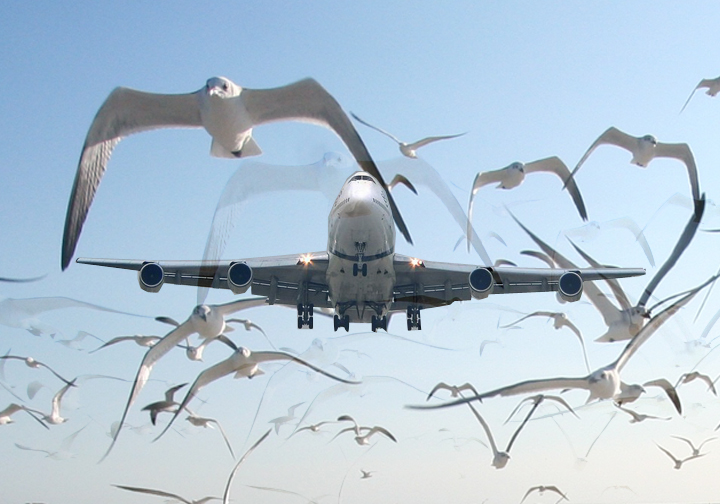About the Avian Hazard Advisory System (AHAS)

The United States Air Force working with DeTect Inc. has developed the Avian Hazard Advisory System (AHAS). AHAS uses three different products to assess the risk of a bird strike for13,831 different polygons used by the Air Force.
The primary source of the risk assessment is the NEXRAD risk. AHAS downloads data for 159 Next Generation Radar (NEXRAD) stations as soon as they become available from the National Oceanic and Atmospheric Administration (NOAA). Each NEXRAD station updates every 4-10 minutes. AHAS uses a suppression model to remove all non-biological targets and then converts the raw data into raster images. The images are used with layers containing all the flying areas listed in AHAS, to extract the risk for each flying area. The extracted risk is based on the percentage of the polygon that has biological activity and the average reflectivity value. The NEXRAD risk gives the risk based on data available right now and is only good for the current risk.
The second source for risk assessment is the SOAR risk. The soar risk uses the latest Model Output Statistics (MOS) and Upper Air Data (UPA) weather data and the known population of some soaring species of birds to determine the risk. The MOS and UPA data are available every 12 hours, and the SOAR risk is updated at 0600z and 1800z. The soar risk projects the risk out 24 hours.
The third source for the risk assessment is the Bird Avoidance Model (BAM). The model consists of GIS raster grids, which span the conterminous United States and Alaska. The value for each cell (or pixel) is equivalent to the sum of the mean bird mass (in ounces), for all species present during a particular daily time period, for one of 26 two-week periods in a year. The mean bird mass has been converted into low, moderate, and severe risks. The spatial data is made accessible to the web pages using SQL.
See the Downloads section for the latest tutorials.
warning !
The Avian Hazard Advisory System (AHAS) was constructed with the best available geospatial bird data to reduce the risk of bird collisions with aircraft. Its use for flight planning can reduce the likelihood of a bird collision but will not eliminate the risk. The AHAS organizations are not liable for losses incurred as a result of bird strikes.